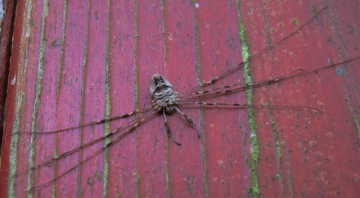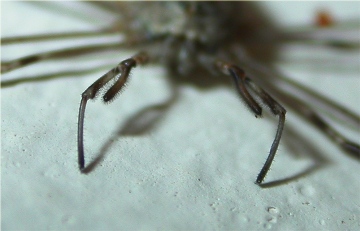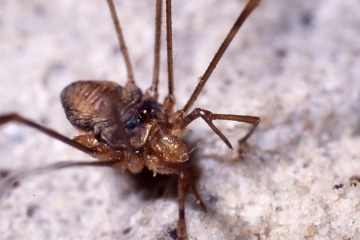Fork-palped harvestman
The body of adults is 4 - 6 mm in length with long legs and distinctive forked pedipalps formed by an apophysis (projection), almost as long as the tibia, emanating from the patella. They have a distinctive resting position, with legs held straight out to either side, at right angles to the body. In adult females the apophysis is tubular, rounded at the distal end and covered with fine setae, whereas those of adult males are thinner with a more pointed end and hairless.
Adult Dicranopalpus sp. are found from late summer into winter. They occur in bushes and trees, often in habitats associated with man, and are easily collected by beating or sweeping suitable areas of vegetation. However, they are perhaps most obvious when resting on walls and fences; their forked palps and characteristic resting position makes this genus unmistakable.
There are three species of Dicranopalpus that have been recorded in the UK. Dicranopalpus ramosus, D. caudatus and D. larvatus, a recent arrival to the British Isles and mainland. D. caudatus was thought to be a synonym of D. ramosus but since 2015 has been formally recognised as a separate species.
Return to Species Surveys


